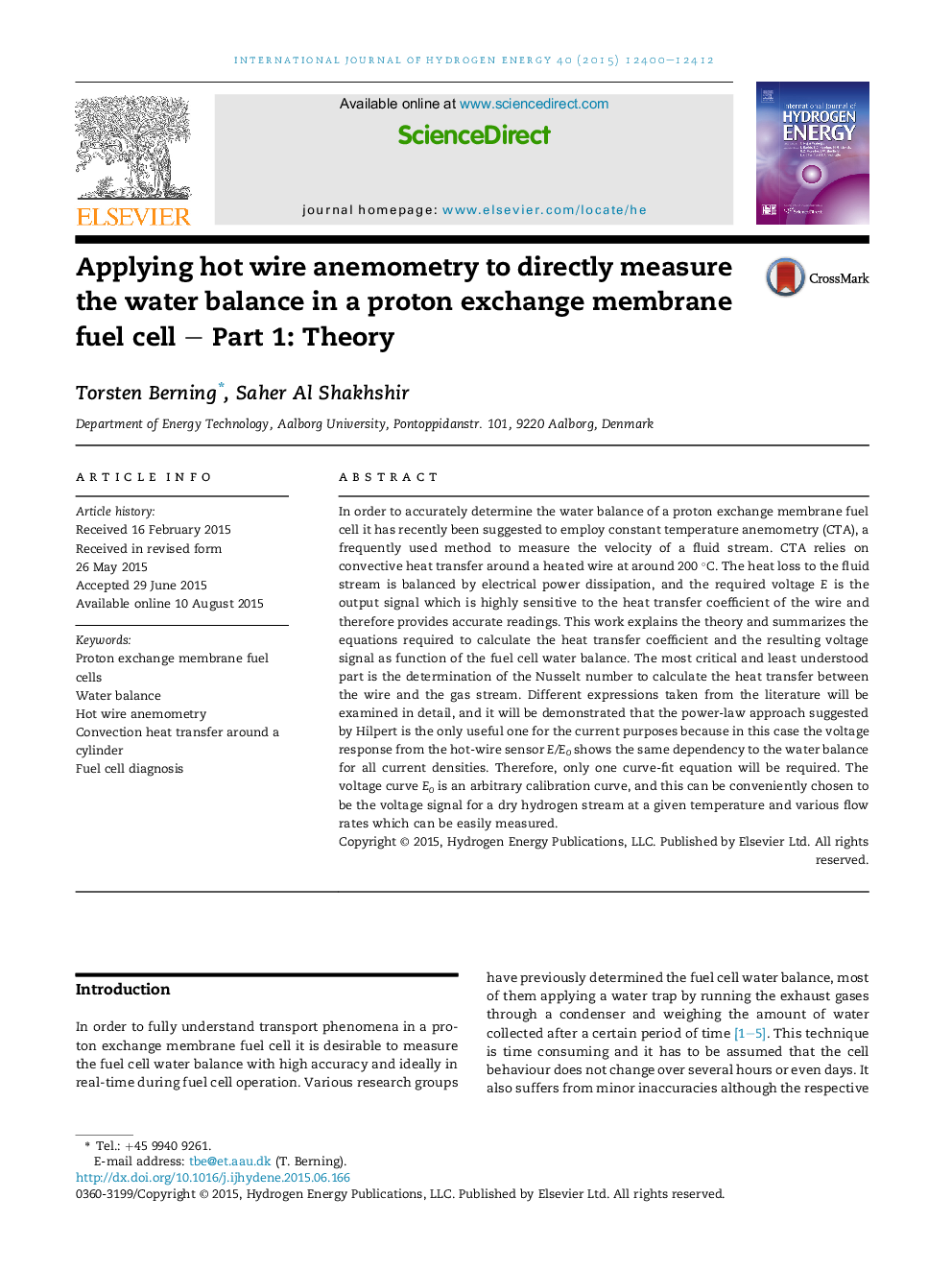| Article ID | Journal | Published Year | Pages | File Type |
|---|---|---|---|---|
| 7714220 | International Journal of Hydrogen Energy | 2015 | 13 Pages |
Abstract
In order to accurately determine the water balance of a proton exchange membrane fuel cell it has recently been suggested to employ constant temperature anemometry (CTA), a frequently used method to measure the velocity of a fluid stream. CTA relies on convective heat transfer around a heated wire at around 200 °C. The heat loss to the fluid stream is balanced by electrical power dissipation, and the required voltage E is the output signal which is highly sensitive to the heat transfer coefficient of the wire and therefore provides accurate readings. This work explains the theory and summarizes the equations required to calculate the heat transfer coefficient and the resulting voltage signal as function of the fuel cell water balance. The most critical and least understood part is the determination of the Nusselt number to calculate the heat transfer between the wire and the gas stream. Different expressions taken from the literature will be examined in detail, and it will be demonstrated that the power-law approach suggested by Hilpert is the only useful one for the current purposes because in this case the voltage response from the hot-wire sensor E/E0 shows the same dependency to the water balance for all current densities. Therefore, only one curve-fit equation will be required. The voltage curve E0 is an arbitrary calibration curve, and this can be conveniently chosen to be the voltage signal for a dry hydrogen stream at a given temperature and various flow rates which can be easily measured.
Related Topics
Physical Sciences and Engineering
Chemistry
Electrochemistry
Authors
Torsten Berning, Saher Al Shakhshir,
